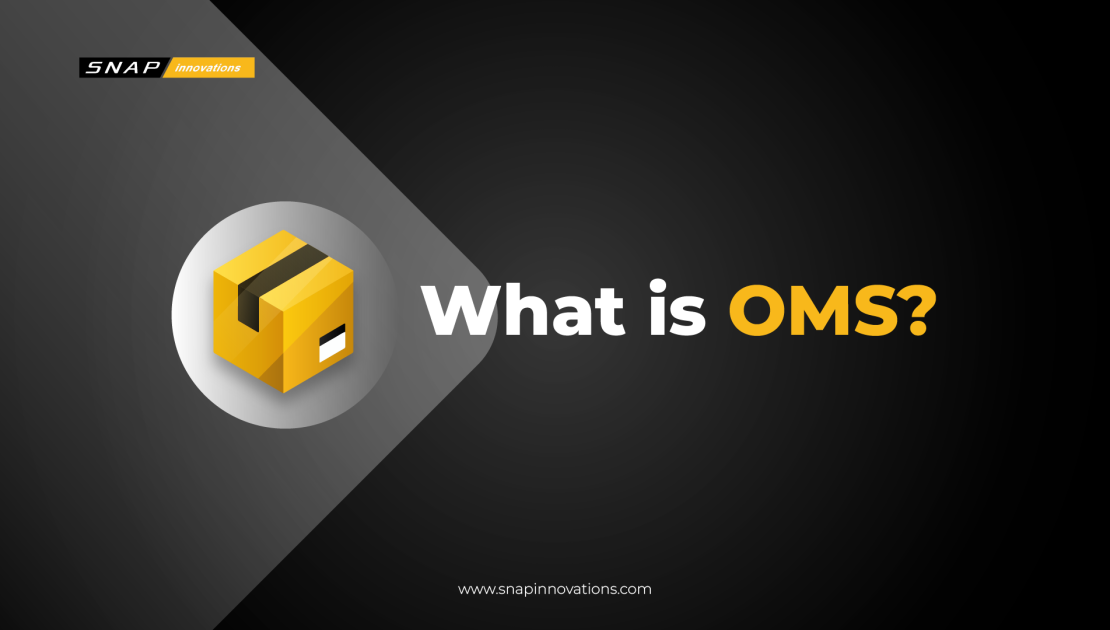What is OMS and How does it work?

In today’s fast-paced digital world, efficient systems are the backbone of any successful business. One such system that has been gaining traction in recent years is the OMS. But what exactly is OMS, and why is it becoming so indispensable? Let’s embark on a journey to unravel the mysteries of OMS and understand its workings.
OMS, or Order Management System, is more than just a buzzword. It’s a comprehensive tool that streamlines and manages sales processes, ensuring that businesses can handle their orders with precision and speed. But how does it achieve this? Let’s dive in!
What is OMS & How Does OMS Work?
 An Order Management System (OMS) is essentially a digital tool that helps businesses track sales, inventory, and customer orders. It acts as a bridge between customers and businesses, ensuring that the order process is smooth from start to finish.
An Order Management System (OMS) is essentially a digital tool that helps businesses track sales, inventory, and customer orders. It acts as a bridge between customers and businesses, ensuring that the order process is smooth from start to finish.
The beauty of OMS lies in its ability to centralize information. Instead of juggling multiple platforms or software, businesses can view all their sales data in one place. This not only saves time but also reduces the chances of errors.
Moreover, OMS integrates seamlessly with other systems like CRM (Customer Relationship Management) and ERP (Enterprise Resource Planning). This means that businesses can have a holistic view of their operations, from customer interactions to inventory management.
The first step in the OMS process is when a customer places an order. This can be through an online platform, over the phone, or even in person. Once the order is placed, the OMS kicks into action.
The system then checks the inventory to ensure that the product is in stock. If it’s available, the order is processed; if not, the customer is informed, and alternatives or restocking dates might be provided. This real-time inventory check is crucial in preventing overselling.
Next, the OMS will determine the best way to fulfill the order. This could involve shipping from a warehouse, drop-shipping from a vendor, or directing the order to a retail location for pickup. The system’s flexibility ensures that businesses can choose the most efficient and cost-effective method.
Lastly, once the order is shipped, the OMS updates the inventory and provides tracking information to the customer. This transparency ensures that customers are always in the loop and can plan accordingly.
Also Read: Institutional Trading Solution: The Ultimate Comprehensive Guide
Benefits of Using an OMS
 The advantages of integrating an Order Management System (OMS) into your business operations are manifold. Let’s delve deeper into the primary benefits:
The advantages of integrating an Order Management System (OMS) into your business operations are manifold. Let’s delve deeper into the primary benefits:
1. Enhanced Customer Satisfaction
- Real-time Updates: Customers appreciate being in the know. An OMS provides real-time updates on order status, from placement to shipment to delivery. This transparency reduces uncertainty and builds trust.
- Efficient Order Processing: With an OMS, order processing becomes more streamlined. This means faster delivery times and fewer mistakes, leading to satisfied customers who are more likely to return.
- Personalized Experiences: Some advanced OMSs can tailor the shopping experience based on past customer behavior, ensuring that they see products or deals that align with their preferences.
2. Streamlined Business Operations
- Centralized Information: With all order-related data in one place, businesses can avoid the chaos of managing multiple platforms. This centralization reduces the chances of errors like shipping the wrong item or mismanaging inventory.
- Automated Processes: Many routine tasks, such as inventory checks or order routing, are automated with an OMS. This automation reduces manual labor, speeds up operations, and ensures consistency.
- Scalability: As a business grows, its operations become more complex. An OMS can scale with the business, accommodating increased order volumes and more intricate logistics without missing a beat.
3. Invaluable Insights for Business Strategy
- Sales Analysis: With all sales data consolidated, businesses can easily identify best-selling products, peak sales periods, and emerging trends. This information can guide inventory purchases and marketing strategies.
- Customer Behavior Insights: By analyzing order histories, businesses can gain insights into customer preferences and behaviors. This can inform product development, promotions, and loyalty programs.
- Inventory Management: An OMS can highlight products that frequently go out of stock or items that are overstocked. This information can guide inventory decisions, ensuring optimal stock levels and reducing carrying costs.
Choosing the Right OMS for Your Business

Choosing the right Order Management System (OMS) can be a game-changer for your business. It’s not just about picking any system; it’s about selecting one that aligns with your business’s unique needs and goals. Let’s delve deeper into the considerations you should keep in mind:
1. Assessing the Size and Scale of Your Business
- Small Businesses: If you’re a startup or a small business, you might not need an extensive OMS with all the bells and whistles. Instead, look for a system that offers basic functionalities, is user-friendly, and can scale as your business grows.
- Large Corporations: Bigger businesses with multiple sales channels might require a more robust OMS. Features like multi-channel integration, advanced analytics, and extensive inventory management would be essential.
2. Integration Capabilities
- Existing Systems: Your business likely already uses various software solutions, like CRM, ERP, or e-commerce platforms. The OMS you choose should integrate seamlessly with these systems to ensure data consistency and reduce manual data entry.
- Future-Proofing: As your business grows, you might adopt new tools and platforms. An OMS with flexible integration capabilities ensures that you won’t face compatibility issues down the line.
3. User Interface and Ease of Use
- User Experience (UX): A system with a well-designed, intuitive interface can significantly reduce the learning curve for your team. This means quicker adoption and fewer operational hiccups.
- Training and Support: Consider OMS providers that offer comprehensive training and support. This can be invaluable, especially during the initial stages of implementation.
4. Reviews and Recommendations
- Industry Peers: Talk to other businesses in your industry. Their experiences with specific OMS solutions can provide insights into system performance, reliability, and customer support quality.
- Online Reviews: Platforms like G2 Crowd, Capterra, and Trustpilot can offer user reviews on various OMS providers. While every business’s experience is unique, consistent patterns in reviews (both positive and negative) can give you a clearer picture of what to expect.
5. Customization and Scalability
- Tailored Solutions: Some OMS platforms allow for customization, ensuring the system aligns perfectly with your business processes. This can be particularly useful for businesses with unique operational needs.
- Growth Considerations: Your business won’t remain static. As you expand, your OMS should be able to handle increased order volumes, new sales channels, and additional integrations. Ensure the system you choose can scale with you.
6. Cost Implications
- Initial Investment: While it’s essential to consider the upfront costs of the OMS, don’t just opt for the cheapest option. Consider the system’s features, scalability, and long-term benefits.
- Ongoing Costs: Some OMS platforms might have monthly or annual fees, while others might charge based on transaction volumes. Understand the full cost structure to avoid unexpected expenses.
Conclusion
OMS, or Order Management System, is undeniably a game-changer in the world of business operations. Its ability to streamline processes, enhance customer satisfaction, and provide invaluable insights makes it an indispensable tool for modern businesses.
As with any tool, the key lies in understanding its functionalities and choosing the right system for your specific needs. With the right OMS in place, businesses can look forward to smoother operations, happier customers, and a brighter future. So, if you haven’t already, it might be time to dive into the world of OMS and explore its myriad benefits.
